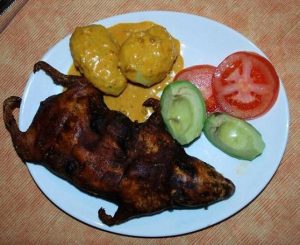
International Meal
Guest Columnist: Peter Faur
In the international business class I took as part of my MBA, the instructor gave the following advice: “If you’re ever doing business abroad, and you’re having dinner with clients or customers, eat at least a bit of whatever they put in front of you, no matter how ghastly it seems.” He worked for a far-flung, multinational company, and he told stories of eating duck feet, jelled pig blood, and camel tendons.
Needless to say, after each of these culinary encounters, the night ended badly, with my instructor tossing and turning in bed or, more often, hunched over a toilet bowl. So why did he offer the counsel to eat foods that, to an American, were not only bizarre but downright harmful to one’s health? “It is the polite thing to do,” he said. Your hosts might never realize the sacrifice you’re making; to them, such foods are everyday fare, not exotic at all. If you don’t eat them, however, you run the risk that your hosts will take offense and believe that you’re looking down on their way of life.
My international travels haven’t been nearly as extensive as my instructor’s, but I remembered his advice during several trips I took to Peru. I always had a choice of cuisine, so I never had to face the issue of turning down food. If I had been confronted with having to eat cui, however, it would have been hard to swallow.
Cui is a major part of the diet in Peru, Bolivia, and in parts of Ecuador and Colombia. You know it by another name—guinea pig. In the same way we pick out the lobster we’ll be eating at a seafood restaurant, it’s not uncommon in Peru to select the guinea pig you’ll be served. It’s such a common dish that a painting at a cathedral I toured in Arequipa portrayed Jesus and the disciples all enjoying cui as the main dish.
My instructor emphasized the importance of being a gracious guest, and he was right. I would add, though, that being a gracious host can pre-empt all of these problems. As I said, I always had a choice of cuisine in Peru, and that’s because my hosts took time to learn what we Americans would be comfortable eating. They offered choices of native cuisine and dishes that would be acceptable to us. In this way, I was able to enjoy the native food that looked good, avoid other foods that were outside my comfort zone, and choose familiar food as well.
If you’re serving visitors from another country, don’t take for granted that their tastes are the same as yours—and plan accordingly.
Guest Columnist:
Peter Faur Peter Faur, president of RightPoint Communications Inc., is a highly experienced public relations professional, an excellent writer and a versatile communicator. He has been on the front lines of controversies ranging from environmental spills and cleanups to industrial fatalities to allegations of animal abuse at marine theme parks. He is known for keeping a cool head, getting people from many walks of life to talk together, and helping people find mutually agreeable solutions to problems they face.
Peter Faur, president of RightPoint Communications Inc., is a highly experienced public relations professional, an excellent writer and a versatile communicator. He has been on the front lines of controversies ranging from environmental spills and cleanups to industrial fatalities to allegations of animal abuse at marine theme parks. He is known for keeping a cool head, getting people from many walks of life to talk together, and helping people find mutually agreeable solutions to problems they face.


